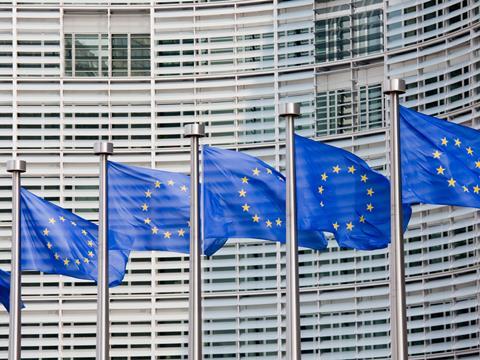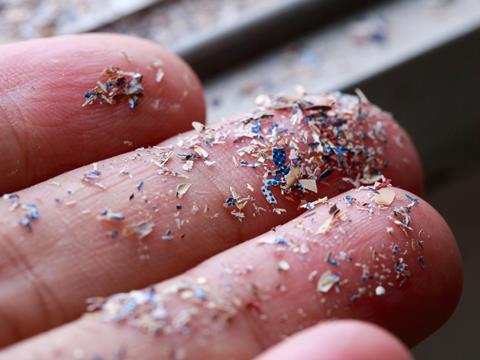
Disruption is on the horizon for the plastics value chain, with experts predicting that the EU’s new Circular Economy Action Plan could direct actions and business plans for the next decade. Following on from his previous article on this topic, Paul Foulkes-Arellano, founder of Circuthon Consulting, takes a closer look at the proposals and what they might mean for our industry.
In my previous article examining the broad implications of the European Commission Circular Economy Action Plan, I was unable to delve into the detail regarding plastics, microplastics, bioplastics, and waste management. I felt these deserved much deeper analysis, as they herald equally radical change and imply far-reaching challenges for the packaging industry.
Let’s begin with the blockbuster, which will really set heads spinning.
For many years, commentators have said that a reduction in the number of polymers used for packaging would simplify sorting and processing. I don’t truly believe that anyone in their wildest dreams thought this would ever be mandated. However, this idea is buried deep in the CEAP 2.0. It’s the third bullet point of clause 3.3 which relates to packaging.
“The Commission will … consider other measures, with a focus on:
- considering reducing the complexity of packaging materials, including the number of materials and polymers used.”
It’s in writing, it’s definitely referring to polymers, but to unspecified “materials” as well. We can only conjecture at what those other materials might be. At a time when billions of euros are being spent on new material development, we are facing perhaps (or certainly) legislation which limits polymer innovation, much of which is based on biobased feedstocks – as encouraged by other guidance issued by the very commission which is now looking to restrict additional packaging polymers.
Clause 3.4 of the plan focuses specifically on plastics, for all manufacture, but clearly with packaging in mind. This is how the clause begins:
“As consumption of plastics is expected to double in the coming 20 years, the Commission will take further targeted measures to address the sustainability challenges posed by this ubiquitous material and will continue to promote a concerted approach to tackle plastics pollution at global. To increase the uptake of recycled plastics and contribute to the more sustainable use of plastics, the Commission will propose mandatory requirements for recycled content and waste reduction measures for key products such as packaging, construction materials and vehicles, also taking into account the activities of the Circular Plastics Alliance.”
Here we begin to see some of the contradictions in the CEAP. If the CEAP is successful, by 2040, we will have seen a huge increase in packaging-free, reuse and refill. French and German lawmakers plan to mandate 20% of non-linear formats by 2030. Guidance from The Institute of Grocery Distribution in the UK points towards a 20-30% reduction in absolute units of packaging (if all recycling initiatives are optimal) by 2030. So surely it’s somewhat illogical to suggest a 100% increase in plastics over the next 20 years.
But let’s put that to one side and look at the other topics covered by CEAP. Microplastics and bioplastics.
Microplastics
There is a clear acknowledgement that in Europe packaging is not the principal source of microplastics. Yet imagery from European institutions around the subject seems to always feature packaging… Nonetheless, the topic of microplastics is a clear focus:
“In addition to measures to reduce plastic litter, the Commission will address the presence of microplastics in the environment by:
- restricting intentionally added microplastics and tackling pellets taking into account the opinion of the European Chemicals Agency;
- developing labelling, standardisation, certification and regulatory measures on the unintentional release of microplastics, including measures to increase the capture of microplastics at all relevant stages of products’ lifecycle;
- further developing and harmonising methods for measuring unintentionally released microplastics, especially from tyres and textiles, and delivering harmonised data on microplastics concentrations in seawater; (my italics)
- closing the gaps on scientific knowledge related to the risk and occurrence of microplastics in the environment, drinking water and foods.”
Although not directly related to the packaging industry, there are many politicians who lay the blame for ubiquitous microplastics firmly at the door of our industry, despite the highest levels of capture and reprocessing of polymers of any industry. The textile industry where polyester makes up 66% of all clothing, has reprocessing rates of less than 1% for non-cellulosics. The packaging industry needs to take a stand and educate on this.
Bioplastics
Here the EC is looking for “best in class” bioplastics. There is no requirement on pulp, metal or polymer packaging. Just bioplastics. The phrasing and intent of this appears to be based on where the European bioplastics industry was a decade ago, not in 2025 and beyond. And how are these assessments going to be made? – I find these clauses very problematic.
“Furthermore, the Commission will address emerging sustainability challenges by developing a policy framework on:
- sourcing, labelling and use of bio-based plastics, based on assessing where the use of bio-based feedstock results in genuine environmental benefits, going beyond reduction in using fossil resources;
- use of biodegradable or compostable plastics, based on an assessment of the applications where such use can be beneficial to the environment, and of the criteria for such applications. It will aim to ensure that labelling a product as ‘biodegradable’ or ‘compostable’ does not mislead consumers to dispose of it in a way that causes plastic littering or pollution due to unsuitable environmental conditions or insufficient time for degradation.”

The end of waste exports?
Clause 4.3 is another huge plot twist. The legislation speaks for itself, so here it is unedited:
“In the past decade, millions of tonnes of European waste has been exported to non-EU countries, often without sufficient consideration of proper waste treatment. In many cases, waste exports result both in negative environmental and health impacts in the countries of destination, and in loss of resources and economic opportunities for the recycling industry in the EU. Recent import restrictions introduced by some third countries have exposed the overdependence of the EU on foreign waste treatment, but they have also mobilised the recycling industry to increase its capacity and add value to waste in the EU.
“In the light of these developments, and considering that illegal shipments of waste remain a source of concern, the Commission will take action with the aim to ensure that the EU does not export its waste challenges to third countries. Actions on product design, quality and safety of secondary materials and enhancing their markets will contribute to making “recycled in the EU” a benchmark for qualitative secondary materials.
“Facilitating preparing for re-use and recycling of waste in the EU will be enhanced by a thorough review of EU rules on waste shipments. The review will also aim at restricting exports of waste that have harmful environmental and health impacts in third countries or can be treated domestically within the EU by focusing on countries of destination, problematic waste streams, types of waste operations that are a source of concern, and enforcement to counteract illegal shipments.”
We can see that one of the proposed mechanisms to achieve a “cleaner and more competitive Europe” is to promote the endorsement of “recycled in the EU”. In terms of pure carbon accounting, this has to be less carbon-intense than shipping waste halfway around the world to a coal-powered facility, but who is going to fund the infrastructure?
This Circular Economy Action Plan is not just aimed at Europe and European businesses.
Clause 7 sets out the global ambitions of the EU, and the role the European Commission wishes to play across the globe. This is not merely about moving the needle on this continent, it’s about showing the world how Europe wants things done. If you sell in Europe, you must comply. Added to this, the EC would expect the fundamentals of the CEAP to be adopted by other governments around the world, as previous legislation has been adopted/adapted.
“To support a global shift to a circular economy, the Commission will:
- building on the European Plastics Strategy, lead efforts at international level to reach a global agreement on plastics, and promote the uptake of the EU’s circular economy approach on plastics;
- propose a Global Circular Economy Alliance to identify knowledge and governance gaps in advancing a global circular economy and take forward partnership initiatives, including with major economies;
- explore the feasibility of defining a ‘Safe Operating Space’ for natural resource use and consider initiating discussions on an international agreement on the management of natural resources;
- build a stronger partnership with Africa to maximise the benefits of the green transition and the circular economy;
- ensure that Free Trade Agreements reflect the enhanced objectives of the circular economy;
- continue promoting the circular economy in the accession process with the Western Balkans, and in the context of bilateral, regional and multilateral policy dialogues, fora and environmental agreements, as well as of pre-accession assistance and neighbourhood, development and international cooperation programmes, including the International Platform on Sustainable Finance;
- step up outreach activities, including through the European Green Deal diplomacy and the Circular Economy missions, and work with EU Member States to enhance coordination and joint efforts for a global circular economy.”
There is a stark and honest conclusion to the Circular Economy Action Plan, which should make us all pause and consider. It will direct all our actions and business plans for the next decade:
“The transition to the circular economy will be systemic, deep and transformative, in the EU and beyond. It will be disruptive at times, so it has to be fair. It will require an alignment and cooperation of all stakeholders at all levels - EU, national, regional and local, and international.”
Disruption, deep systemic transformation, agreement, co-operation. Can we in the packaging industry rise to the challenge? It seems there is no other option.
In March 2020 Paul founded Circuthon Consulting to accelerate his work on sustainability and circular economy projects across the globe. His areas of expertise are raw materials, food & beverage, apparel, and footwear. His particular focus is NextGen fibre recycling, composting, biomaterials, and new material development. Much of his work consists of mentoring businesses in the supply chain and disposal chain on reuse and novel materials.











No comments yet